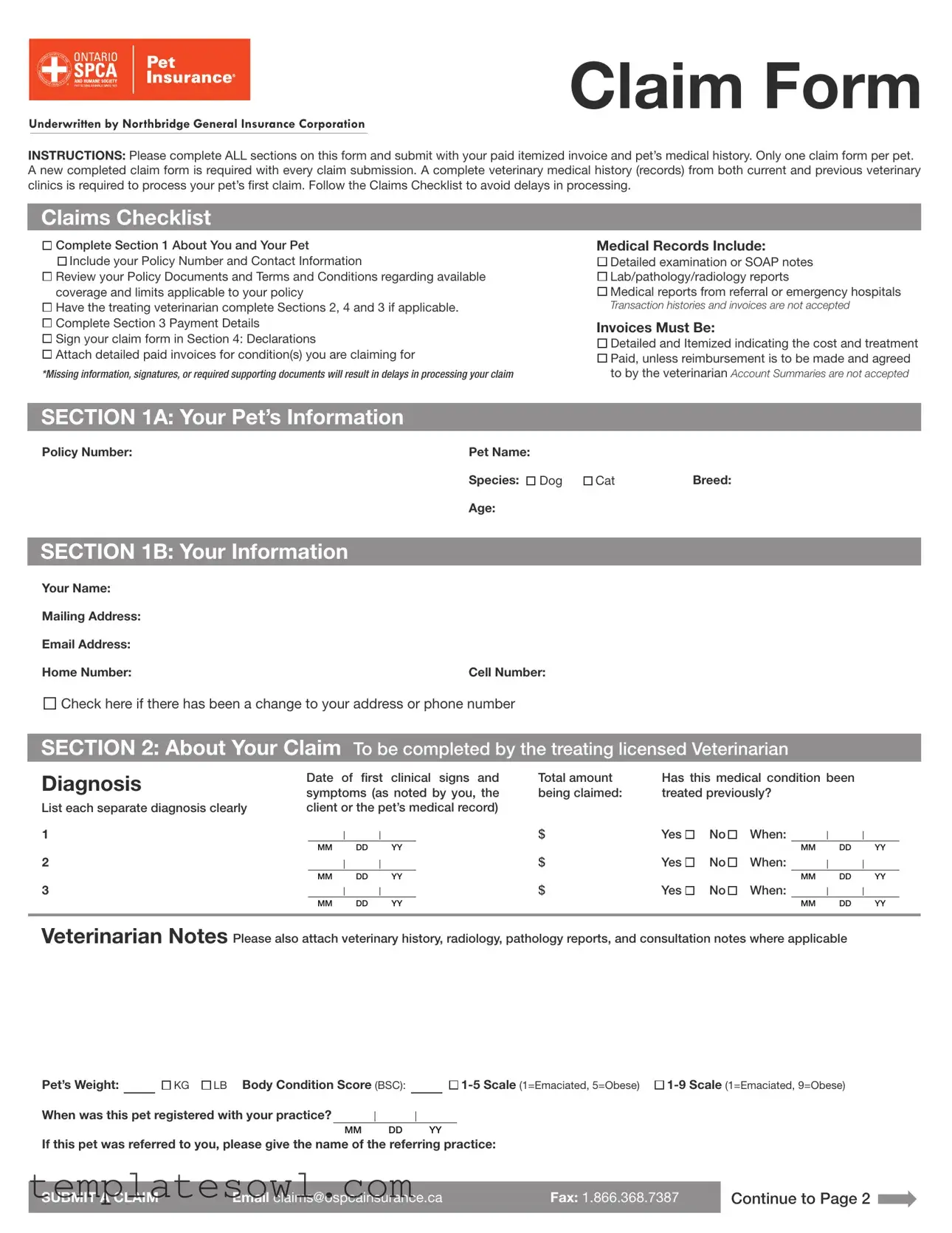Filling out the Ontario Claim form for OSPCA is an essential step in seeking financial support for your pet’s medical expenses. However, errors can lead to delays in processing. Here are nine common mistakes to avoid.
One frequent mistake is not completing **all sections** of the form. Each part is crucial for a thorough review. Incomplete forms can result in processing delays. Ensure that every section is filled out completely.
People often forget to include their **Policy Number**. This number is vital for identifying your claim. Without it, the processing team may have difficulty matching your claim to your coverage, causing unnecessary setbacks.
Another common mistake is neglecting to include detailed **contact information**. It’s essential to provide accurate email and phone numbers. If the claims team needs to reach you for additional information, they must be able to do so without difficulty.
Pet owners may overlook the need for a comprehensive **medical history**. It is important to include records from both current and previous veterinary clinics. The absence of this documentation can delay the evaluation of your claim.
Some pet owners fail to have their treating veterinarian complete **Sections 2 and 3**. This step is mandatory. Without the veterinarian's input, your claim may lack necessary medical validation.
A common mistake occurs when individuals do not sign the claim form in the **Declarations Section**. Your signature is a confirmation of the information provided. An unsigned form will lead to rejection or significant processing delays.
Another oversight is not attaching **detailed paid invoices** for the claimed conditions. These invoices must be itemized and clearly indicate the treatments received. General account summaries will not suffice and may hinder the claim process.
Finally, not reviewing policy documents thoroughly can result in confusion about what is covered. Policyholders should familiarize themselves with their coverage terms before submitting a claim to avoid disappointment later on.
By being mindful of these common mistakes, you can help ensure that your claim is processed smoothly and efficiently. Your pet deserves the best care, and timely financial support is an essential part of that care.


 Complete Section 1 About You and Your Pet
Complete Section 1 About You and Your Pet Include your Policy Number and Contact Information
Include your Policy Number and Contact Information Review your Policy Documents and Terms and Conditions regarding available coverage and limits applicable to your policy
Review your Policy Documents and Terms and Conditions regarding available coverage and limits applicable to your policy Have the treating veterinarian complete Sections 2, 4 and 3 if applicable.
Have the treating veterinarian complete Sections 2, 4 and 3 if applicable. Complete Section 3 Payment Details
Complete Section 3 Payment Details Sign your claim form in Section 4: Declarations
Sign your claim form in Section 4: Declarations Attach detailed paid invoices for condition(s) you are claiming for
Attach detailed paid invoices for condition(s) you are claiming for Detailed examination or SOAP notes
Detailed examination or SOAP notes Lab/pathology/radiology reports
Lab/pathology/radiology reports Medical reports from referral or emergency hospitals
Medical reports from referral or emergency hospitals


 Check here if there has been a change to your address or phone number
Check here if there has been a change to your address or phone number